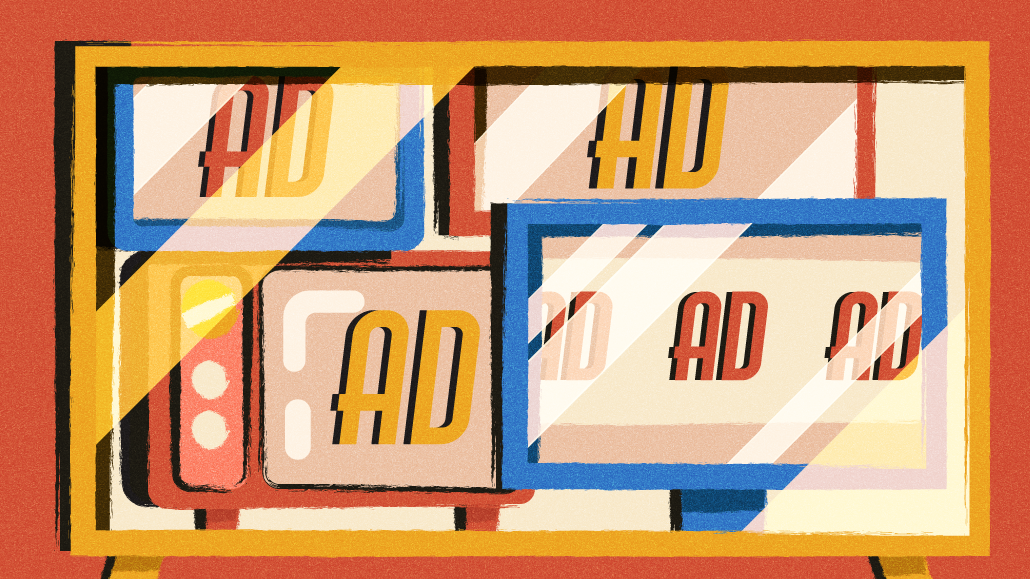Register by Jan 13 to save on passes and connect with marketers from Uber, Bose and more
How CTV platforms are pushing non-traditional ad formats — but not too far

As a Digiday+ member, you were able to access this article early through the Digiday+ Story Preview email. See other exclusives or manage your account.This article was provided as an exclusive preview for Digiday+ members, who were able to access it early. Check out the other features included with Digiday+ to help you stay ahead
Home screen takeovers are poised to overtake the connected TV ad market.
OK, that’s a bit strong. But non-traditional streaming ad formats, such as CTV platforms’ home screen placements, did sorta steal the spotlight during this year’s NewFronts. Roku, Samsung and Vizio each used their NewFront presentations to introduce new ad options that go beyond the standard 15- and 30-second interstitials.
Roku and Vizio are adding video ads to their respective CTV platforms’ home screens. Samsung is rolling out an interactive ad format that will replace the traditional interstitial ad break. And of course, Roku has started testing a home-screen ad format that will test streaming audiences’ tolerance for ads in new places.
The aim of these new ad products seems to be seizing on the streaming audience fragmentation issue facing advertisers, as covered extensively in Digiday’s “The Future of TV” video series. While advertisers can reach audiences through individual streaming services, the fragmentation challenge can make it hard for them to reach those audiences in the broad, brand awareness-pushing manner they have done historically on traditional TV.
“We need to find net-new ways to fill the top of the funnel and connect with customers,” said Vizio group vp of advertising and data sales Adam Bergman in an interview.
Roku seems to be taking the exploration to the extreme with the home-screen ad format it started testing on May 1 that will serve a video ad after viewers click from the Roku City screensaver and before returning them to the platform’s home screen. When presenting the ad format on stage, Roku president of media Charlie Collier positioned the ad format as the ultimate lead-in for advertisers to reach audiences before they watch anything on the platform and touted its “potential to be the biggest recurring ad unit on television.”
Maybe. But Roku doesn’t want to overdo it. In an interview, Roku senior director of ad innovation Peter Hamilton said the company wants to use the ad format “sparingly.”
“We want it to be rare. We want it to be connected to major events, enablements and things that matter in TV,” Hamilton continued. “In fact, many platforms have takeover types of units. But they are not scarce enough, and they’re overburdensome, and they’re too long and they take away the user’s control. So we’re thinking a lot about all of those elements.”
Roku isn’t alone in that respect. Samsung and Vizio, for example, are taking a restrained approach when it comes to opening up their home-screen inventory to different types of advertisers.
Case in point: While Samsung allows non-endemic advertisers — a.k.a. non-entertainment brands that are not promoting streaming apps or programming on the platform — to advertise via its home-screen’s lower-corner tile ads, but “some of the more immersive experiences are being reserved for endemics,” said Michael Scott, vp, head of sales and operations at Samsung Ads, in an interview.
Similarly, Vizio is reserving its Vizio Recommends home-screen ad format for entertainment, quick-service restaurant and food delivery advertisers. “We have been very strict and guarded about the types of advertising experience we allow on the home screen. For all intents and purposes, a non-entertainment brand, you have to be integrated into content; you have to be supported with the content experience. We are still holding that rule,” said Bergman.
That said, the CTV platforms are opening up home-screen inventory to non-endemic advertisers. Vizio Recommends, as mentioned, will be available for QSR and food delivery brands. Meanwhile, Roku started expanding its Roku City placements to non-endemic advertisers over the past year, starting with McDonald’s last fall and now adding a sponsored car placement in the virtual metropolis for DoorDash as well as a video version of its home-screen Marquee format.
While home-screen placements may most obviously appeal to entertainment companies looking to drive audiences to their streaming services, these are also ultimately TV ads and mass-reach opportunities at that. So it makes sense that they would appeal to traditional TV advertisers beyond those in the entertainment industry. “Finance, retail, insurance — these are the biggest spenders in television,” said Hamilton.
But while audiences may be accustomed to seeing non-entertainment advertisers on their TV screens, the CTV platforms are still having to consider how to incorporate those advertisers into their home screens in a way that won’t turn off audiences.
“What we have to do is manage the amount of supply that goes to non-endemic [advertisers] on the platform across the board and, as it increases, continue to be diligent about our research and our sentiment analysis and just stay very closely connected to our consumer team whose goal is to drive total viewing hours,” Hamilton said.
More in Future of TV

Future of TV Briefing: 5 ripple effects that will shape the future of TV in 2026
This week’s Future of TV Briefing looks at the trends and developments that will shape the TV, streaming and digital video industry in 2026.

‘A year of loose ends’: Digiday editors share top takeaways from 2025
This year was filled with major developments – from Netflix’s planned WBD deal to Omnicom’s acquisition of IPG to Google’s ultimately cookie reversal – and Digiday editors Sara Jerde and Seb Joseph help to recap the year that was (and wasn’t).

Future of TV Briefing: How the future of TV shaped up in 2025
This week’s Future of TV Briefing looks back at the top topics and trends that overtook the TV, streaming and digital video industries in 2025.








